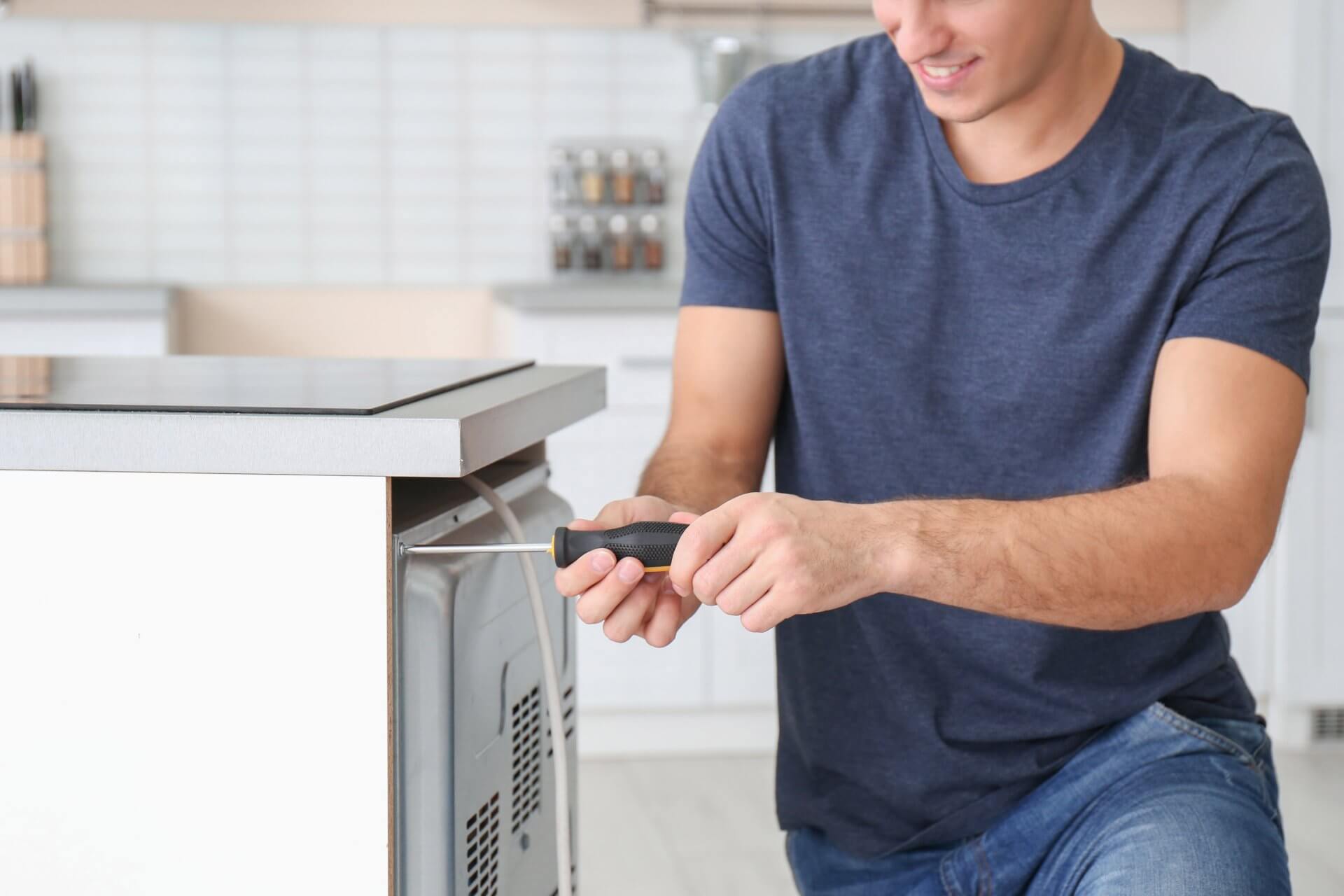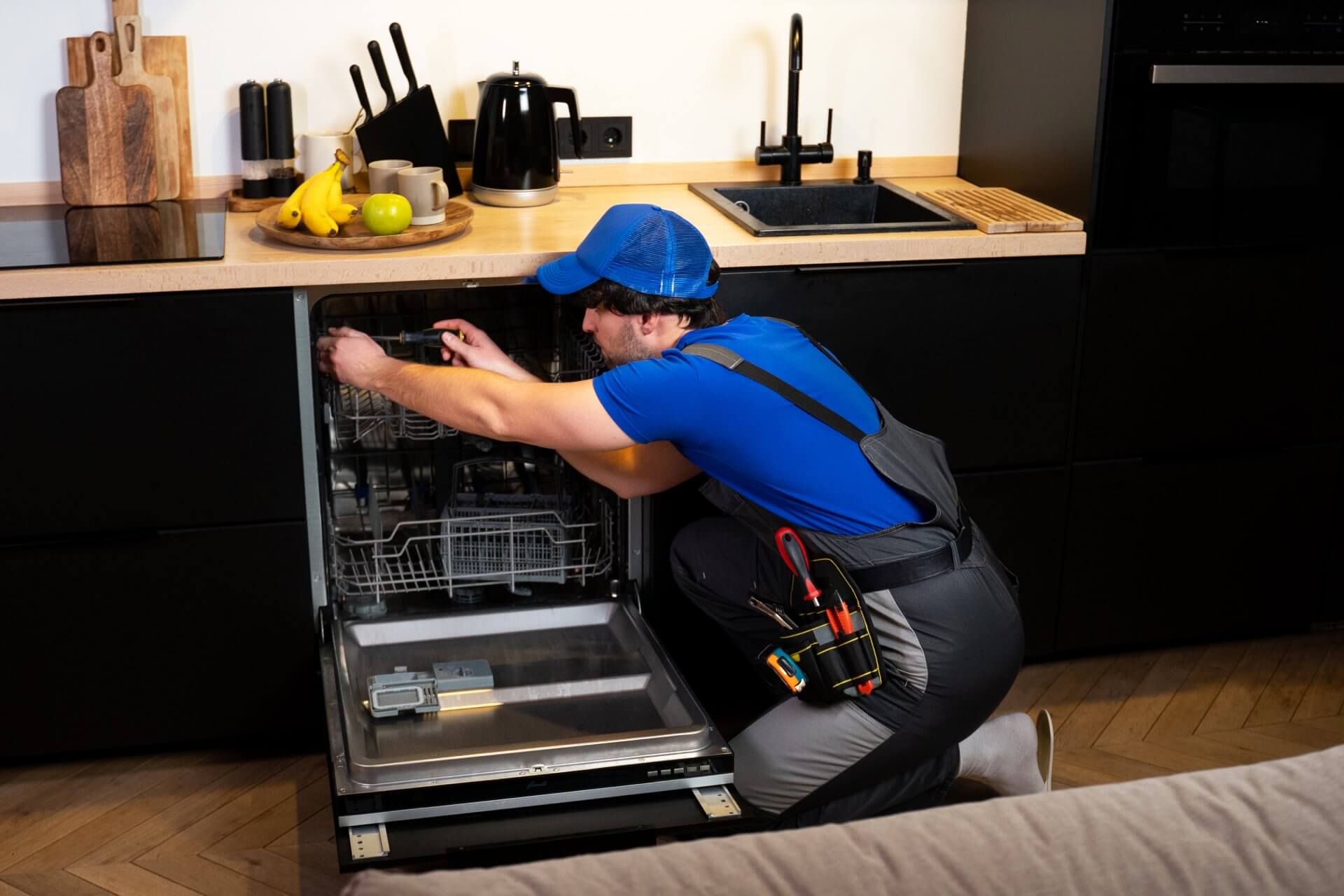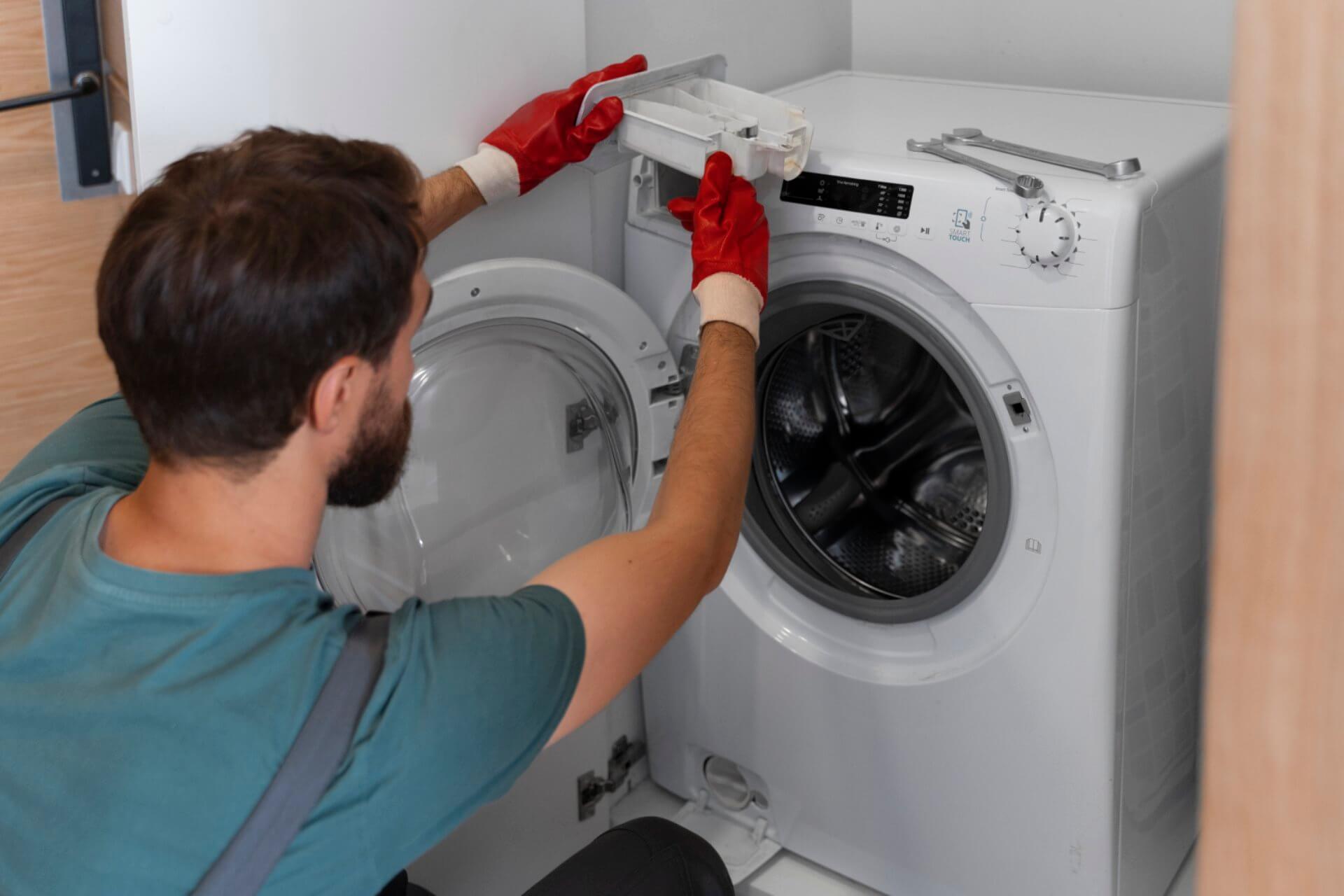Dishwasher Not Draining? 5 Simple DIY Fixes That Actually Work
We've all been there - you open the dishwasher expecting clean dishes only to find a pool of dirty water at the bottom! When your dishwasher isn't draining properly, it's not just gross - it leaves your dishes dirty, creates nasty smells, and can even damage your kitchen floor if it starts to leak. But here's the thing - you don't always need to call in the pros!
I've helped hundreds of frustrated homeowners with this exact problem, and trust me, about 85% of dishwasher drainage issues can be solved with simple DIY fixes. This guide will walk you through the 5 most effective tests to diagnose what's gone wrong with your dishwasher and show you exactly how to get it draining properly again without spending hundreds on a service call.

Common Reasons Your Dishwasher Isn't Draining
Before diving into solutions, it helps to understand what might be causing the problem. When your dishwasher won't drain, it's typically due to one of these issues:
- Clogged filter or debris screen — The #1 cause responsible for roughly 65% of drainage problems
- Blocked drain hose
- Faulty drain pump
- Air gap or disposal issues
- Clogged drain valve
The good news? The first two causes account for roughly 80% of all dishwasher drainage problems and can be fixed with zero special tools and basic DIY skills.
5 Effective DIY Tests for Dishwashers That Won't Drain
1. Check and Clean the Filter Assembly
Possible Signs:
- Water standing in the bottom of the dishwasher
- Dishwasher stops mid-cycle
- Gurgling sounds during drain cycles
- Food particles left on dishes after washing
The filter system is your dishwasher's first line of defence against drainage problems. But here's what most people don't realise - many dishwashers have multiple filter components that all need regular cleaning!
DIY Test:
- Locate the filter assembly — Usually found at the bottom of the dishwasher tub:
- Remove the bottom rack for better access
- Look for a circular component in the centre or corner of the tub floor
- Remove the filter components — Most modern dishwashers have:
- A coarse debris trap (often a grid or basket)
- A fine filter (typically cylindrical or flat)
- Some models have a third ultra-fine mesh filter
- Inspect and clean thoroughly:
- Remove any visible food debris, broken glass, or foreign objects
- Rinse under warm water to remove buildup
- Use an old toothbrush to scrub stubborn grime
- Check for damage or cracks in the filter components
- Clean the filter housing:
- Wipe out the area where the filter sits
- Check for any debris that might have fallen into the sump area
- Reassemble properly — Make sure all components lock back into place correctly
Pro Tip: This 5-minute maintenance task should be performed every 1-2 months to prevent 65% of drainage problems! Many Australians don't realise their dishwasher even has a removable filter that needs cleaning.
2. Check the Drain Hose for Blockages or Kinks
If your filter is clean but water still isn't draining, the problem might be with your drain hose.
Possible Signs:
- Dishwasher partly drains then stops
- Water backs up into the sink when dishwasher drains
- Dishwasher drains very slowly
- Moldy or musty smell from the dishwasher
DIY Test:
- Turn off power to the dishwasher — Safety first! Switch it off at the power point or circuit breaker
- Locate the drain hose:
- Pull the dishwasher out from under the counter if possible
- Otherwise, check under the sink where the drain hose connects
- Inspect the entire length of the hose:
- Look for obvious kinks or bends where water might get trapped
- Ensure it hasn't been crushed or pinched behind the dishwasher
- Check for any visible blockages or damage
- Disconnect and check for clogs:
- Place a shallow tray or towels under the connection points
- Disconnect the hose from the sink drain, rubbish disposal, or air gap
- Visually inspect for blockages
- Run water through the hose or use a straightened coat hanger to carefully clear any debris
- Check for proper installation:
- The drain hose should have a "high loop" or be mounted to the underside of the counter
- This prevents backflow and siphoning issues
- The hose should not be submerged in the drainage system
Australian Plumbing Standard Note: AS/NZS 3500 requires dishwasher drain hoses to have an air break (either a high loop or air gap) to prevent contaminated water from flowing back into the dishwasher. Make sure your installation complies with this safety requirement!
3. Test the Drain Pump
If you've checked the filter and hose but your dishwasher still won't drain, it's time to investigate the drain pump.
Possible Signs:
- Humming noise but no draining
- No sound at all during drain cycle
- Clicking or buzzing during attempted draining
- Error codes related to drainage (typically "E2", "20", or "dF" depending on your model)
The drain pump's job is to force water out of your dishwasher. When it fails, water stays put.
DIY Test:
- Listen test:
- Start a drain cycle or cancel a running cycle (which usually triggers draining)
- Listen for the drain pump motor - you should hear a distinct humming
- Visual inspection:
- Disconnect power to the dishwasher
- Remove the lower access panel (usually held by screws at the bottom front)
- Locate the drain pump (typically a small motor with hoses connected)
- Check for obvious damage or leaks
- Check for obstructions:
- Inspect the area around the pump intake
- Look for foreign objects that might be preventing the impeller from turning
- Basic electrical test:
- If you have a multimeter and feel comfortable using it, check for continuity across the pump terminals
- No continuity indicates a failed pump
Warning: If you're not comfortable working with electrical components, this is where professional help makes sense. Drain pump replacement typically costs $150-230 including parts and labor — still much cheaper than a new dishwasher!
4. Check the Air Gap or Rubbish Disposal Connection
Many drainage problems actually occur outside the dishwasher itself, in the connected plumbing system.
Possible Signs:
- Water backing up into the sink
- Dishwasher partly drains then refills with dirty water
- Water spewing from the air gap during draining (if your setup has one)
- Drainage problems began after installing a new rubbish disposal
DIY Test:
- If you have an air gap (a small chrome cylinder on your sink):
- Remove the cap
- Check for debris or blockages
- Clean thoroughly with an old toothbrush
- Flush with water to clear any residue
- If connected to a rubbish disposal:
- Check if the knockout plug was removed when the disposal was installed
- New disposals have a plug that must be knocked out before connecting a dishwasher
- Run the disposal to clear any potential blockages
- Check the sink drain:
- Fill your sink with water, then drain it
- If it drains slowly, you may have a clogged sink drain affecting the dishwasher
- Try a natural drain cleaner (1 cup baking soda followed by 1 cup vinegar, then hot water)
5. Check the Drain Valve or Solenoid
Some dishwasher models use a separate drain valve that can become clogged or fail electrically.
Possible Signs:
- Dishwasher fills properly but never attempts to drain
- No water draining even with a working pump
- Error codes specific to drainage valve issues
DIY Test:
- Locate the drain valve:
- With power disconnected, remove lower access panel
- The drain valve is typically located near the pump
- It may have a visible solenoid (electrical component) attached
- Inspect for debris:
- Check for any food particles or buildup preventing valve movement
- Clean any accessible parts of the valve
- Check for free movement:
- Some valves can be manually actuated to test operation
- The valve should move freely without sticking
- Electrical testing (if you're comfortable with basic electrical work):
- A multimeter can test the solenoid for continuity
- No continuity suggests a failed solenoid requiring replacement
Technical Tip: Drain valves and solenoids typically cost $30-60 AUD for the part. If you're replacing one, take a photo before disconnecting anything to help with reassembly!
Prevention: Stop Drainage Problems Before They Start
The best way to deal with dishwasher drainage issues is to prevent them in the first place:
- Scrape plates thoroughly — Remove large food particles before loading
- Clean the filter monthly — This simple habit prevents 65% of drainage problems
- Run hot water in the sink before starting the dishwasher — Ensures the drain line starts with hot water
- Use a quality dishwasher cleaner every 3 months — Removes buildup and prevents odours
- Check and clean the spray arms quarterly — Ensures proper water circulation during washing
When to Call a Professional
While these DIY tests resolve the vast majority of drainage issues, there are times when professional help is warranted:
- You've tried all the above solutions without success
- There's water leaking from under the dishwasher
- You notice electrical issues (tripping breakers, burning smells)
- Your dishwasher is under warranty
- You're not comfortable disassembling parts of your machine
Conclusion
A dishwasher that won't drain is certainly frustrating, but as you can see, diagnosing the problem is often much simpler than you might expect. In my experience, about 85% of drainage issues can be solved with the first two tests alone - cleaning the filter and checking the drain hose.
Taking care of these simple maintenance tasks regularly can extend the life of your dishwasher by years and save you from those dreaded "dirty dish disasters." Your dishwasher is designed to last 10-15 years with proper care - don't let a preventable drainage issue cut that lifespan short!
Frequently Asked Questions (FAQs)
How do I reset my dishwasher after fixing a drainage problem? Most dishwashers can be reset by pressing and holding the "Start" button for 3 seconds or by turning off power at the switch or circuit breaker for 5 minutes. For specific models, check your user manual for the proper reset sequence.
Is it normal for some water to remain in my dishwasher after a cycle? A small amount of clean water (less than a cup) is normal in the sump area of most dishwashers. This prevents seals from drying out. More than this, or dirty/smelly water, indicates a drainage issue.
My dishwasher drains into my sink and causes it to back up. What's happening? This typically indicates a clog in your sink drain or rubbish disposal. Try running the disposal and clearing your sink drain before running the dishwasher again. Australian plumbing standards require proper air gaps to prevent contamination from sink backflow.
How often should I clean my dishwasher filter? For best performance, clean your dishwasher filter every 1-2 months. If you have hard water (common in many parts of Australia) or wash without pre-rinsing, you may need to clean it monthly. Some manufacturers like Bosch even recommend weekly cleaning in heavy-use households.
How much does it cost to replace a dishwasher drain pump in Australia? The part itself typically costs $85-150 AUD depending on your model. Professional installation adds $100-150 in labor, making the total repair $185-300 — significantly less than a new machine which starts around $900.
Can I use vinegar to clean my dishwasher's drainage system? Yes! Running an empty cycle with 2 cups of white vinegar in a bowl on the top rack can help dissolve minor blockages and remove odours. However, this won't clear significant physical blockages that require manual removal.

About Julian
Home appliance enthusiast and DIY repair specialist with a passion for helping others save money on appliance maintenance.
Related Articles

Dishwasher Not Cleaning Properly? 7 Expert Solutions That Work

White Film on Dishes from Dishwasher? 6 Proven Fixes | Australian Guide

